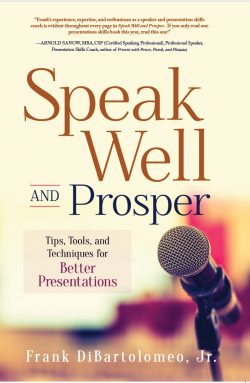Sunday, August 7, 2022

“Story, as it turns out, was crucial to our evolution – more so than opposable thumbs. Opposable thumbs let us hang on; story told us what to hang on to”
– Lisa Cron, Wired for Story
My wife and I love a good story. We watch them on TV, read them in books, and talk about them constantly.
There are elements of novel writing that you can use to enhance your stories when you speak. Read on to discover these novel writing elements applicable to your speaking stories.
Plot
Dictionary.com defines plot as the plan, scheme, or main story of a literary or dramatic work, as a play, novel, or short story.
As such, the stories you tell during your presentation must have a plan, scheme, and central message relevant to your presentation’s message.
One of the things you should realize is your story does not have to be real. As long as the story is relevant to your presentation’s message, fictional stories are acceptable. You may want to try to create a fictional story relevant to your presentation. Who knows? You could be starting a nascent novel writing career as a bonus.
But back to your presentation stories.
The plot in your speaking stories must have a logical plan with events building on one another.
The story does not even have to be your own. You can use it if you attribute it to the source and the story is relevant to your presentation’s purpose.
For instance, if your presentation is about what people are willing to give up for others to make them happy, you may want to try O. Henry’s story The Gift of the Magi.
This story concerns James and Della Dillingham Young, a young couple who, despite their poverty, individually resolve to give each other an elegant gift on Christmas Eve. Della sells her beautiful long hair to buy a platinum fob chain for Jim’s antique gold watch. Meanwhile, Jim pawns his treasured watch to purchase jeweled tortoiseshell combs for Della’s precious tresses.
Whether you use a true story, one you create, or a story from another source, the plot of your story must be relevant to your presentation’s purpose and have a logical plan with events building on one another
In addition to a logical plot to your presentation stories, they must have believable characters.
Believable Characters
Characters are the core of any story. Without them, you wouldn’t have a story. So, within the confines of the time of your speech, you perform the delicate balancing act of describing your characters, telling your story, and staying within the time constraints of your presentation.
From the Gotham Writer’s Workshop: Writing Fiction:
“Good writers create a sense that their characters are people – physical, emotional, living, breathing, thinking people. The more you manage to make your characters feel real, to create the illusion of an actual person on the page, the likely your reader is to fall into the story, past the language and the words, letting the real world recede and be replaced by the fictional world which you created.”
Replace the words “on the page” with “in your presentation” to see how this is relevant.
You can save time telling your story by displaying your tone of voice and body language. This will add what a book has to describe in words in a reduced time.
Act out your characters using rhetorical devices like pauses, tone of voice, and pace. If you do, your audience will suspend reality and be in the story with you.
Think about what keeps you reading that mystery, historical, or coming-of-age novel. It’s the characters.
So, any stories you use in your presentation should have a logical plot and believable characters.
You also have to settle on your story’s point of view.
Point of View
I was not a fan of my English class in high school. Perhaps you weren’t either. That’s fine. Nothing wrong with that.
However, I did learn three ways to tell a story in English class. First-person, second-person, or third-person. These are the options for the point of view of the story.
In my engineering parlance, the first person point of view is where we talk about ourselves, our opinions, and the things that happen to us. The second person point of view is where there someone is being spoken to by the storyteller. Finally, the third person point of view is where a person is spoken about in the story, but the storyteller is not talking directly to the person.
Whew! That’s enough high school English for me and, I suspect, for you.
The bottom line is there are different ways to tell a story. The most popular forms of story are first and third person. Stories can change points of view during the story. However, until you have told several stories in your presentations, I would stick to one point of view, either first or third person. Changing points of view during your presentation will confuse your audience and maybe you.
Remember, you have a short amount of time to tell your story in your presentation. You have to make every second count. If you change points of view during your story, it will probably confuse the audience. You are familiar with your story, but your audience is not.
Novel writing techniques are directly applicable to the stories you tell in your presentations.
Your presentation stories should have a logical plot, have believable characters, and you should tell the story from one point of view, either first or third person.
Think about that last dark, stormy night you curled up with an engaging book before a roaring fire. What made you stay with that book? When you determine this, tell your story like that fascinating book!
Call to Action
Always tell the stories in your presentation with a logical plot. If you don’t, you will distract the audience.
Without believable characters, you don’t have a story. Describe your story characters as “physical, emotional, living, breathing, thinking people.”
Select either first or third person and stick with the one point of view telling your story. The audience will be grateful to you.
“We are, as a species, addicted to story. Even when the body goes to sleep, the mind stays up all night, telling itself stories.”
— Jonathan Gottshall in The Storytelling Animal: How Stories Make Us Human
_____________________________ Frank DiBartolomeo is a retired U.S. Air Force Lieutenant Colonel and award-winning speaker, presentation and interview skills coach, and Professional Member of the National Speakers Association. He was awarded Toastmasters International’s highest individual award, Distinguished Toastmaster because of his outstanding work in public speaking and leadership.
Frank formed DiBartolomeo Consulting International (DCI), LLC (www.speakleadandsucceed.com) in 2007. The mission of DCI is to help technical professionals to inspire, motivate, and influence their colleagues and other technical professionals through improving their presentation skills, communication, and personal presence. Reach Frank at frank@speakleadandsucceed.com and (703) 509-4424.
_____________________________ Don’t miss Frank DiBartolomeo’s latest book!
“Speak Well and Prosper: Tips, Tools, and Techniques for Better Presentations”

Available now at Amazon.com and BarnesandNoble.com